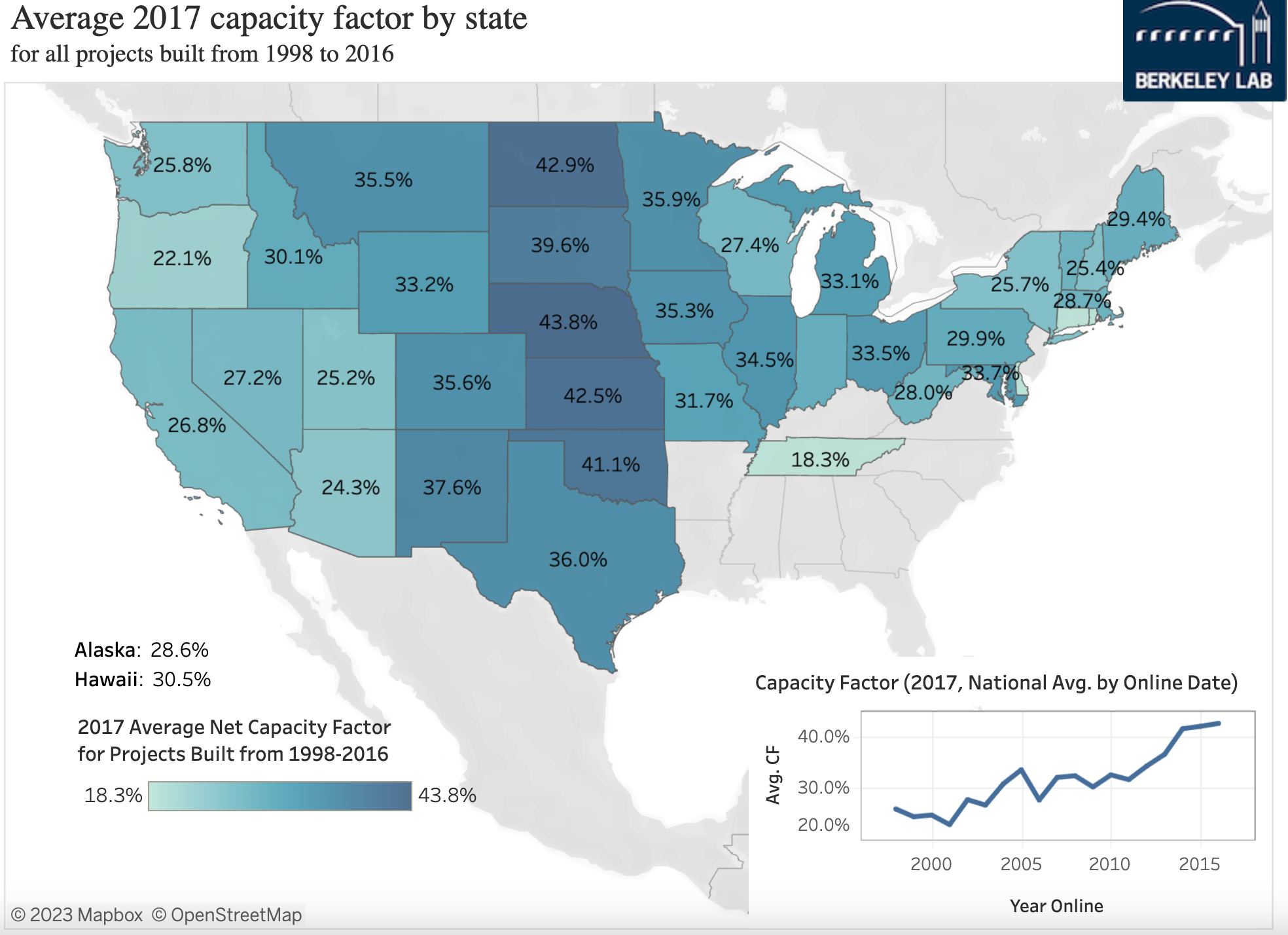Although the direct emissions (i.e., scope 1 emissions) from wind energy are zero, there are emissions generated upstream and downstream from the use of wind energy. SIMAP now includes the ability to calculate scope 3 upstream emissions for wind energy, which are categorized as scope 3 category 3: fuel- and energy-related activities (FERA).
Wind energy: Upstream, operational, and downstream life cycle stages of wind energy
Source: NREL 2013
When selecting the appropriate upstream emissions factor for wind energy, there are two main considerations:
- What is the capacity of the wind turbines? Capacity is the ratio of actual to maximum potential electricity generation. Turbines that operate at higher capacity factors produce more electrical output compared to lower capacity factors as they operate for longer period of time throughout the year.
- What size is the wind farm? Larger wind farms operate at a higher efficiency and have lower emissions per unit of energy output.
In SIMAP, we default to a weighted average upstream emissions factor for wind energy
The SIMAP default upstream emissions factor for wind uses the following assumptions:
- Capacity: 30% (average for land-based systems)
- Wind farm size: Large
If you have additional information about your on-site wind generation, then you can customize your upstream emissions factor. The table below shows factors for more efficient systems (35% capacity) and the emissions for smaller wind farms (<100 kW).
Wind capacity by US state
The figure below shows the average wind capacity for US state. You can use this figure to determine whether you should use the default SIMAP emissions factor for wind (30% capacity) or the higher capacity factor (35% capacity).
US Wind Energy Performance (Capacity factors) in 2017
Source: Wind Exchange 2017
Upstream emission intensities for wind energy at different capacities and sizes
The table below shows scope 3 upstream emissions factors for wind energy. The emissions factors are organized by type capacity and size of the wind farm. If you know what type of wind energy you have, you can select the appropriate emissions factor from the table below and enter that custom factor into your SIMAP account.
Upstream scope 3 emissions factors for wind energy
| Wind energy: SIMAP default |
Wind energy: High capacity |
Wind energy: Small on-campus wind |
| kg CO2e/kWh | kg CO2e/kWh | kg CO2e/kWh |
| 30% capacity | 35% capacity | small wind: <100 kW |
| 0.01100 | 0.00705 | 0.62000 |
The small on-campus wind installation has a much higher emissions factor because of the loss of efficiency for running wind energy at such a small scale.
How to enter your custom wind emissions factor into SIMAP
You can customize your upstream wind electric emission factors using the following steps:
- Go to the Data Entry tab > Emission factors page
- From the drop-downs, make the following selections: Scope 1 > On-campus stationary sources > Wind
- Now when you select the last drop-down, FERA emission factors will appear for all emission factor types
- Select the 'FERA CO2' emissions factor, enter your custom emissions factor in the text field for all applicable years, and click the green 'save' button at the end. Note: If using the emissions factors above, you should ONLY enter a factor in the CO2 field because the units are CO2-equivalents. The N2O and CH4 fields were intentionally left blank for wind to avoid double-counting.
Which wind FERA emissions factors are available in SIMAP?
There upstream emissions factors for wind in SIMAP are only available in CO2-equivalents because that is the unit provided in the data source. Because we could not split this normalized emissions factor into specific greenhoues gases (CH4, N2O), we entered the CO2-equivalent emissions factor as the CO2 factor and left the CH4 and N2O factors blank to avoid double-counting. The same CO2-equivalent emissions factors are used across all years.
Although NOx emissions are generated from upstream wind, we do not yet have those emissions factors calculated and populated in SIMAP. If you have a custom upstream wind emissions factor for NOx, there is a blank field on the emissions factors page where you can enter your custom factor.
Sources
NREL 2013. Wind LCA Harmonization. https://www.nrel.gov/docs/fy13osti/57131.pdf
US Department of Energy: Wind Exchange 2017. U.S. Wind Energy Performance (Capacity Factors) in 2017.



